Flowering Clipped Azaleas and Rhododendrons
Japanese Garden Design
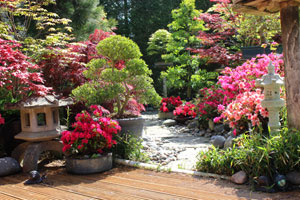
Azaleas have become an intrinsic plant when it comes to designing and landscaping a Japanese garden, since this bushy, evergreen shrub provides year-round interest.
In Japan, planted groups of individual azaleas are referred to as 'O-Karikomi', while a group clipped to form a single mass is known as 'Tamamono', with both of these arrangements offering plenty of seasonal impact to any landscaped oriental garden.
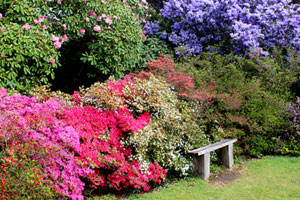
Varieties and Flowers
Being a miniature species of rhododendron, with compact growth, azaleas respond well to pruning and are often clipped to form spherical ball shapes, hill-like mounds and gentle curves, adding structure to an oriental garden in the winter, when the maples have dropped their leaves. And when spring comes along, your topiary efforts will be rewarded by a breathtaking show of thousands of small flowers, which come in shades of pink, red, blue, purple, yellow, orange and white.
Since foliage and shape is generally more important than flowers in any Japanese garden, azaleas provide a chance to inject some seasonal colour. Both early and later flowering varieties are available, allowing you to prolong the blooming season and provide yourself with ongoing colour, although for maximum impact, it is best to choose azaleas that will all flower at the same time, with a themed colour palette.
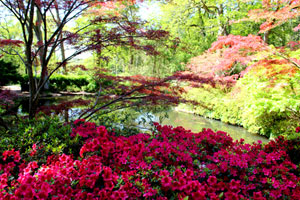
Soil Requirements
Rhododendrons require an acidic soil and whilst they appreciate a damp, shady position, they can be grown in full sun when regularly watered. However, they will not tolerate soggy soil, especially in the winter.
If you have carried out a PH test on your soil and found that it is actually slightly alkaline rather than neutral or acidic, then do not despair. There are now a small number of rhododendrons that will actually grow happily in mildly alkaline soil, or alternatively you can add a soil acidifier to the ground each year, feeding with an ericaceous fertiliser as well.
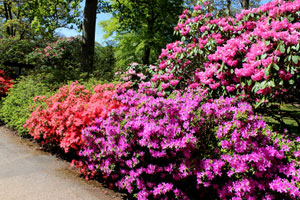
Growing in Pots
Azaleas will grow very happily in containers, as long as they are well watered during the hot summer months and potted in a gritty free-draining ericaceous compost mix.
The advantage with growing these plants in pots is that they can be rearranged as many times as necessary, so that you have a harmonious grouping when they are in flower. As they grow, they can be spread further apart, moved elsewhere or simply pruned back into shape.
Pruning and Repotting
When grown in pots, azaleas can be repotted either before or after flowering, and root pruned if necessary, when they are pot bound and you wish to return them to the same pot.
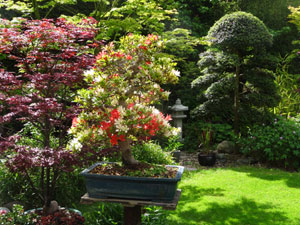
They should only be fed with a high-nitrogen fertiliser after they have finished flowering, which is a good time for pruning, especially as by trimming them at this time of the year, you will also be dead-heading them and therefore stopping them wasting their energy forming seed pods.
Of note, shoots will bud back from bare wood if the plant is healthy, so don't be afraid to prune back hard when necessary, bearing in mind that the top of any azalea bush tends to be the weakest part of the plant.
Similar Plants
If you want the topiary effect of azaleas, but are unable to grow this particular species in your soil, then a number of other plants will create similar domes of foliage, without the flowers. Japanese holly (ilex crenata), dwarf yew varieties (taxus baccata), box plants (buxus sempervirens) and hebes are all good evergreen substitutes with small leaves, while for flowers and silver foliage, lavender may be an interesting replacement. Some oriental gardeners choose pieris plants, since they have attractive red spring foliage, although these also need an acid soil.
 Azaleas have become an intrinsic plant when it comes to designing and landscaping a Japanese garden, since this bushy, evergreen shrub provides year-round interest.
Azaleas have become an intrinsic plant when it comes to designing and landscaping a Japanese garden, since this bushy, evergreen shrub provides year-round interest.


 They should only be fed with a high-nitrogen fertiliser after they have finished flowering, which is a good time for pruning, especially as by trimming them at this time of the year, you will also be dead-heading them and therefore stopping them wasting their energy forming seed pods.
They should only be fed with a high-nitrogen fertiliser after they have finished flowering, which is a good time for pruning, especially as by trimming them at this time of the year, you will also be dead-heading them and therefore stopping them wasting their energy forming seed pods.